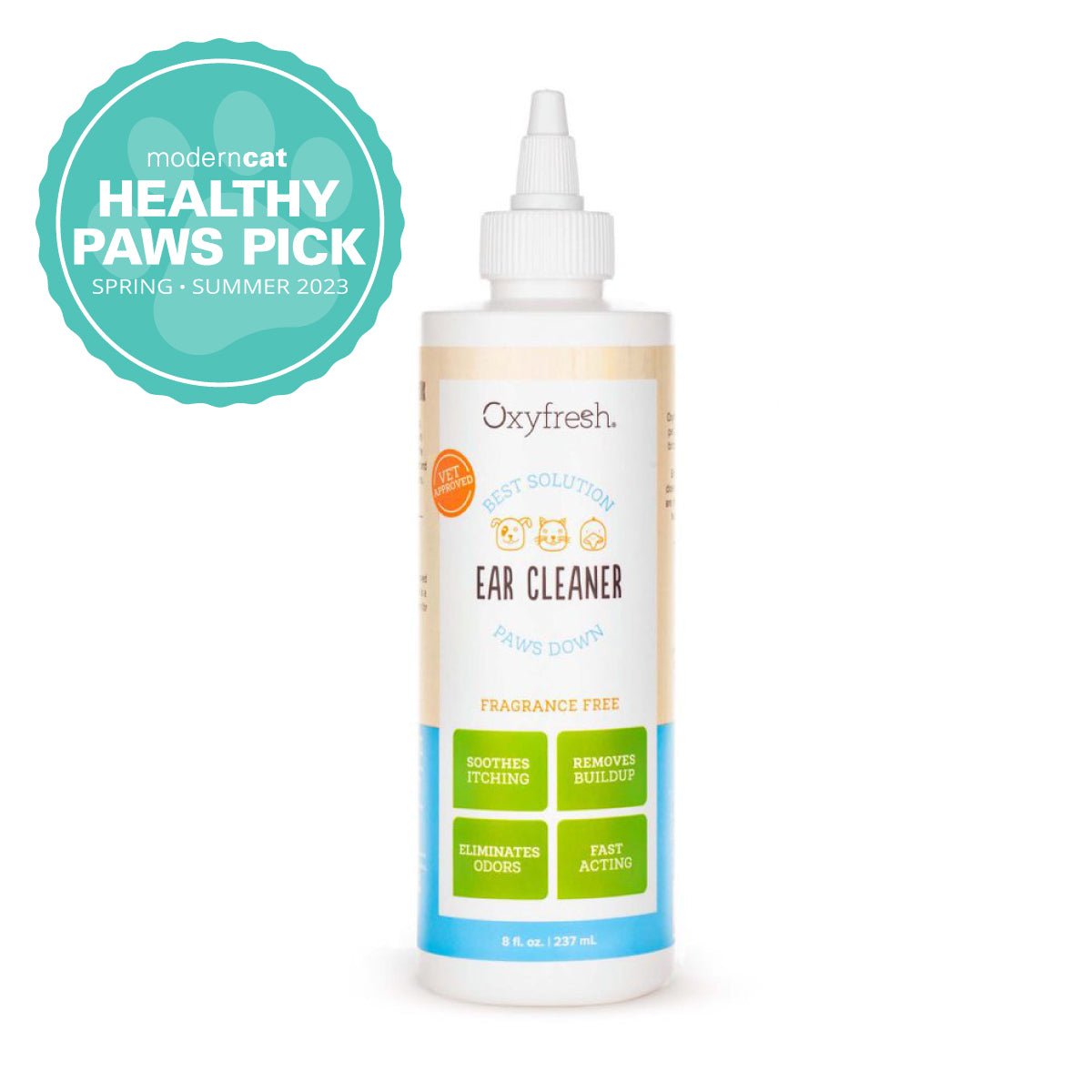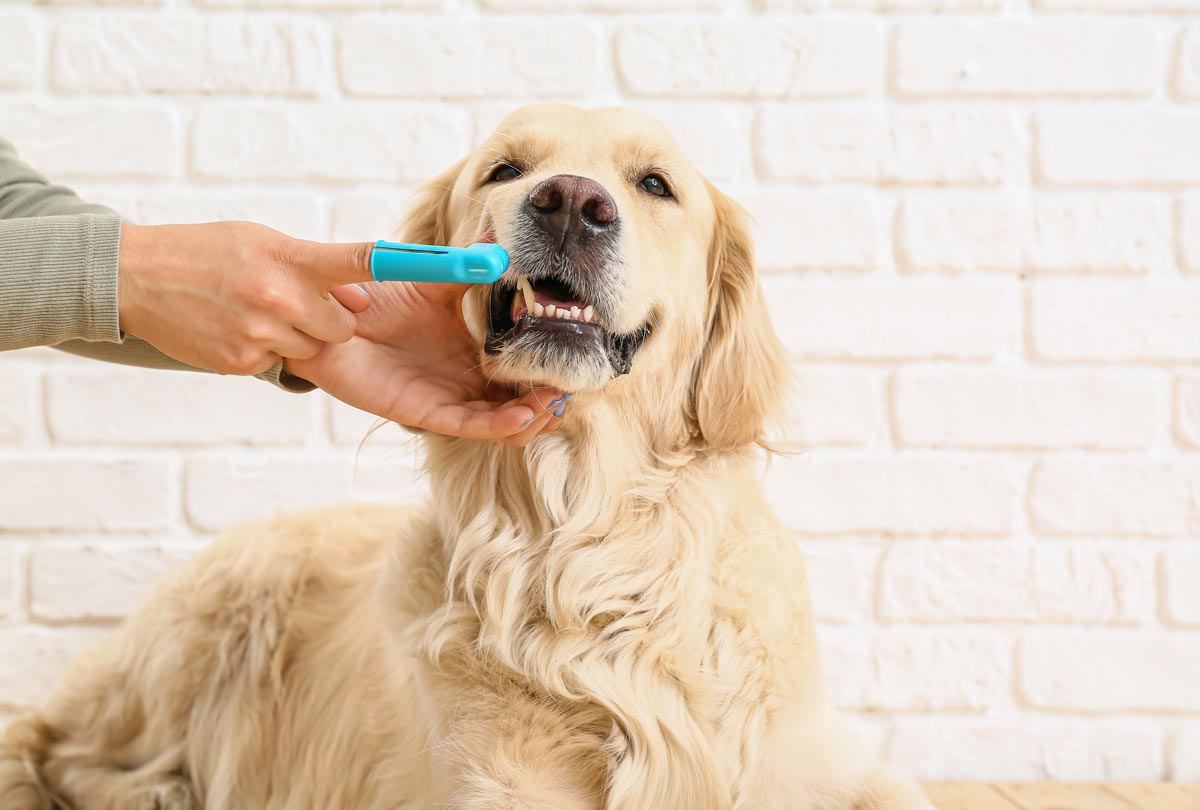Ear mites. If the name alone gives you the heebie-jeebies, we get it. Dealing with cat ear mites is NOT fun, especially for your feline.
Members of the arachnid family, these parasites live on the surface of a cat’s ear canal, dining on wax, dead skin cells and oils while (gulp) laying their eggs.
Before you engage in any hiss-terics, keep reading. We’ll give you the scoop on how to tell if your cat has ear mites and exactly what to do about it.
What to Know About Ear Mites in Cats
Cat ear mites are scientifically known as otodectes cynotis, which translates to "ear beggar of the dog." But don’t let the name fool you. Ear mites are more common in cats, in particular kittens under 12 weeks old and outdoor cats. It’s estimated that 90% of cats will get ear mites at some point in their lives.
Ear mites have a three-week lifecycle, meaning the time it takes to go from egg to larvae to nymph to reproducing adult.
Adult ear mites can live for two months, and they continually reproduce during that timeframe (up to 10,000 mites can inhabit the cat’s ear), so unless you want a mite infestation on your hands, start treatment ASAP.
Keep in mind, while mites prefer the ear as their "home sweet home," they will occasionally travel to other parts of the cat's body and cause itching. (Don't worry, they do not prefer humans as hosts.)
Are ear mites contagious in cats?
Yes, ear mites are contagious in cats and can easily spread from pet to pet through everyday activities like playing and taking catnaps together. Sharing blankets, bedding, and fabric toys can also spread ear mites.
Outdoor cats are especially susceptible to ear mites, even more so if they have a weakened immune system. Just one encounter with another cat who has ear mites can lead to an infestation.
If your cat has ear mites, all pets in the household need to be treated for mites, as they can easily spread from cats to dogs to the family gerbil and back again if the cycle isn’t broken!
What Do Ear Mites in Cats Look Like?
Unless you have superhero vision, it’s hard to see cat ear mites with the naked eye. (Under a microscope, ear mites in cats look like tiny crabs.) Fortunately, their debris is very easy to spot, and this will be the best way to tell if your cat has ear mites.
Ear mites leave behind a reddish-brown or black crumbly substance in the ear that looks like dirt or coffee grounds. This debris is from dried blood, ear wax, dead mites, live mites, mite eggs, and mite waste material. Eww.
If you spot debris but still want more official confirmation of ear mites without a trip to the vet, you can deploy one of these two tactics:
- Remove debris from your cat’s ear with a cotton ball, smear it across a piece of dark paper, then examine the paper under a bright light with a magnifying glass. If you see tiny white specks moving around, those are ear mites!
- Do the same step as above, but instead of using a magnifying glass, record a video on your phone, then enlarge it to check for moving white specks.
Beyond "Coffee Grounds" ... More Signs of Cat Ear Mites
While the coffee-like debris in the cat’s ear is the best way to tell if your cat has ear mites, sometimes the mites can be farther back in the ear canal, so there are other signs to look for as well.
Smelly cat ears
Ear mite discharge can give off a foul odor in your cat’s ears all by itself. The odor will be even stronger if the cat develops an ear infection from the mites. This is common, with mites accounting for 50% of cat ear infection cases. That’s why you should act fast if you suspect your cat has ear mites and not wait around for an ear infection to brew.
Intense ear scratching
Imagine having a bunch of little arachnids in your ear, scurrying around, making themselves at home and expanding their families. (Sweet dreams, haha.) Seriously, though, this is very itchy and uncomfortable, and since cats can’t talk, they tell us of this problem through excessive ear scratching. If the mites are on other parts of the cat’s skin, you may notice them scratching all over.
Red, inflamed ears
Ear mites can cause your cat's ears to become red and inflamed, often from scratching or due to an infection in the ear. You may also notice a skin lesion, rash or hair loss around your cat's ears.
Head shaking
Cats will often vigorously shake their heads to try and dislodge the ear mites that are causing itch and irritation in their ears. The head shaking can become so intense that the cats develop an ear hematoma.
A cat ear hematoma is a swollen pocket of blood that forms in the cat’s ear flap. The bulge in the ear flap may feel spongy, like a water balloon. Redness is also common, along with a cauliflower-like appearance.
Ear hematomas occur when small blood vessels in the ear break and bleed, due to the cat’s excessive ear scratching and head shaking. Mites are the most common cause of ear hematoma in cats. Ear hematomas can sometimes heal on their own, but they are painful, and if they go untreated, the cat’s ear can become permanently deformed. It’s best to let a vet look at the cat’s ears and determine the best course of action.
How to Get Rid of Ear Mites in Cats
Use OTC Products
Over-the-counter (OTC) topical medications are available for treating cat ear mites. These products are made of pyrethrins (a group of insecticidal compounds) and piperonyl butoxide, a synergist component of pesticide formulations. Remember this one key thing before going the OTC route: they don’t kill the mite eggs. Therefore, you must be diligent in treating your cat’s ear mites for the full mite lifecycle of 21 days, and many veterinarians recommend 30 days with home treatments to be on the safe side.
Olive Oil for Ear Mites in Cats
Anecdotal evidence suggests using olive oil or mineral oil to smother ear mites in cats’ ears. However, this is not a quick fix for treating cat ear mites, and it won’t treat a yeast or bacterial infection in the cat’s ears, which often occurs with ear mites. Although it’s a non-toxic, natural remedy for ear mites in cats, you will need to put a few drops of oil daily into your cat’s ears for up to three weeks. Let’s just say cats may not take kindly to this!
Visit the Vet
This is the best course of action if you suscept your cat has ear mites. The vet will be able to make a proper diagnosis and ensure that your cat does not have an ear infection. Ear infections in cats rarely clear up on their own and can lead to permanent hearing loss, balance issues, and severe pain if left untreated.
Another benefit to visiting the vet is prescription mite medications kill both adult mites and their eggs, often in one single dose, as is the case with products with active ingredients like selamectin, moxidectin, fluralaner and sarolaner. Oral, systemic and topical treatments are available. Your vet will be able to advise on what they recommend for your cat.
Cat Got Ear Mites? Don't Forget to Do Chores!
The entire ear mite life cycle takes place on the host animal, although mites can survive for nearly a week without feeding on a host, which is why blowing off household chores is a big mistake when your cat has ear mites.
Vacuum your carpets thoroughly – we see you thinking about skipping those corners! When you're done, use a flea powder on the carpet to get rid of all mites in their various stages. Repeat in two weeks. You’ll also want to wash and dry your cat’s bedding on the hottest setting, repeating every week.
Clean Cat Ears = The Key to Successful Ear Mite Treatment
Getting rid of cat ear mites starts with cleaning your cat’s ears thoroughly. If you take your cat to the vet, they will clean the cat’s ears before administering any topical medication. If you go the OTC route or use olive oil for ear mites in cats, you’ll need to do the ear cleaning yourself.
Having a clean cat ear not only removes mites and their debris, giving your cat instant relief against itching, but it will make the mite medication more effective. If you don’t remove the mites and debris at the surface of your cat’s ear canal, the medication will just sit on top of the debris and not penetrate through it.
Pro tip: After cleaning out mite debris, make sure you have a garbage bag right next to you, then put the cotton ball into it and throw it away.
Be Finicky About Your Cat Ear Cleaner
The intense itching associated with cat ear mites can put your kitty’s ears in bad shape, leading to scratches, redness, and open wounds in the ear. Therefore, when choosing a cat ear cleaner, the #1 thing to keep in mind is it needs to be free of ingredients that can burn, such as alcohol, vinegar, fragrances and peroxides.
If you want to save yourself some search time (you’ve got vacuuming to do, remember?), roll with the choice preferred by veterinarians and groomers: Oxyfresh Pet Ear Cleaner.
This gentle, fast-acting cat ear cleaner will give your feline instant relief from itching, neutralize ear odors on contact, and show those mites whose boss, easily clearing out mites and their debris.
And because Oxyfresh Pet Ear Cleaner is hypoallergenic and free of alcohol and irritants, your cat won’t throw a hissy-fit when you reach for the bottle! (Need a helping paw? Check out: How to Clean Cat Ears: 3 Easy Steps.)
Don’t wait another second to take on your cat’s ear mites. Get those ears fresh and clean and give your cat sweet relief from the itch and irritation of mites with Oxyfresh Pet Ear Cleaner. It really is the cat's meow!






